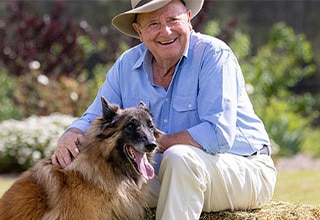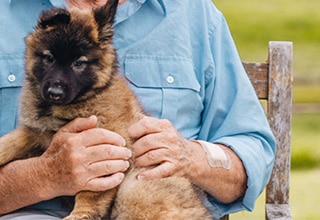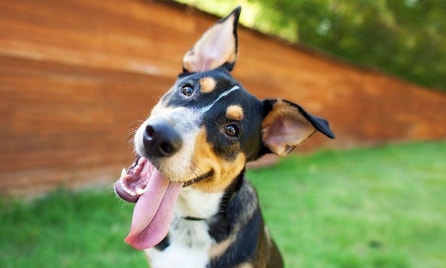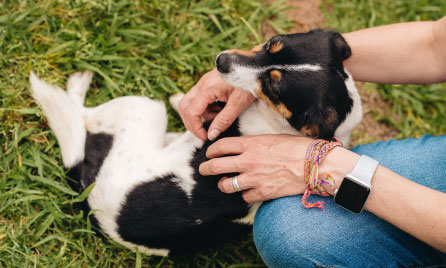- text
-
* Limits, waiting periods, exclusions and excesses may apply.
Dr Harry: Dog park etiquette.
Ever since I started in the television industry, I became a great advocate for the establishment of dog parks. Areas where dogs could mix freely with one another, and be what dogs enjoy being most: dogs. After all, they are pack animals and the majority of dogs enjoy each other's company. I urged people to lobby their council to set aside such areas where this could happen. After all, dog owners paid good money in the form of registration fees for their dog[s], but what did they get in return?
With so many varieties of dog parks now established across the country, owners are spoilt for choice, but everyone has to do their bit to make sure they’re an enjoyable place for all. Read below for some handy information on dog park etiquette.
Types of dog parks.
I am glad to say that much has changed in the last 50 years; there are areas like this all over Australia, and in fact the world.
I have seen one in Helsinki that would barely provide anything more than a public canine toilet facility, it was about the size of a double car garage. Some that I’ve seen locally are totally fenced, and the size of the average suburban block, about a quarter of an acre. Australia has a huge coastline and for those that live near a beach, you are blessed as some beaches are designated ’lead free’, and I like that name better. Often there are limitations depending on the time of day while others are open 24/7. Likewise, there are areas in some large parks where once again your dog can just ‘go’.
My enthusiasm for the whole idea has these days been tempered with a good deal of caution. ‘Lead free’ areas are not and I repeat, not suitable for every dog. In fact, there are many well accredited dog trainers who are totally opposed to the idea. I would like to always see the 'best’, rather than the worst side of the argument.
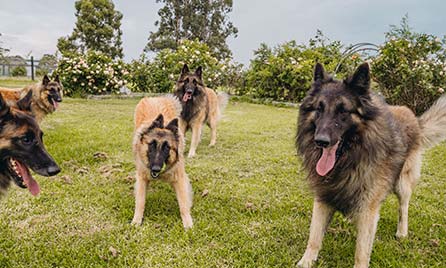
Dog temperaments.
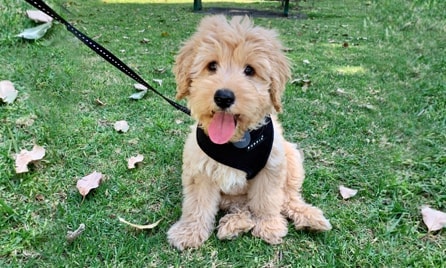
It very much depends not only on the temperament of your dog, but also your ability to control your dog. There are, I regret to say, about 5% of dogs that do not come when they are called. We call it a poor recall. It’s not that this dog is bad in any way, it just finds whatever it’s currently doing far more attractive than what you, the owner, may be doing, so it chooses just to carry on, and I guess it thinks the same about you!
The big problems are fights. Yes, fights. Regrettably, not all dogs get on. Some are very dominant individuals, and often this becomes worse when the ‘prize’ that the dogs are competing for is your dog’s favourite toy, or worse still, a food reward.
Most dog friendly areas have a notice outside which all intending users of the park should read. There are strict ethics required on the part of you (the owner) and your dog, particularly when it comes to behaviour. You are also obliged to clean up after your dog, so the necessary plastic bag should always be handy. I would never walk into such an area without having the lead, whilst no longer on the dog, still in my hand. Why? Fights!
Risk of dog fights.
The problem that ‘fights’ inflict is a state of awareness in the dog that was attacked. This is anxiety. It can establish a behaviour pattern in this dog of ‘canine aggression’. To put it quite bluntly, the dog will develop, in so many cases, an attitude of ‘shoot first and ask questions later’. In other words, it is going to defend itself by instigating further confrontations. These may be directed at any dog, but more particularly, at dogs that looked like the individual by whom they were first attacked.
In other dogs, quite the reverse can happen, the sufferer immediately seeks comfort and security in the owner’s arms. The dog is now terrified! Incidentally, be very careful in attempting to separate fighting dogs. You can be badly bitten, as they simply lash out in all directions. If you must grab something, make sure it’s a hind leg.
“Oh, yes I know my dog can play a bit rough so I keep a muzzle on him”. I’m sorry this is just not good enough. While it may prevent injury in any further altercations, it may not in some dogs prevent the wearer from attacking again.
10 tips for visiting a dog park
1. Ensure that your dog is healthy, and all vaccinations, medications and parasite control treatments are up to date. Remember, dogs enjoy sniffing and it’s usually the rear end they want to sniff.
2. Ensure your dog(s) are microchipped and preferably neutered. Non-desexed females in season are a ‘NO NO’ and some non desexed males can be a bit too dominant.
3. Ensure your dog has good recall, in other words it comes when it’s called. Quite honestly, if you haven’t taken your dog to a canine obedience class then your ability to control it in certain situations won’t be that good. As I always say, you educate your children, what about your dog?
4. Walk your dog in on a lead. Ask the dog to sit, and make sure you have control, before unleashing. It’s handy to leave a collar on, as it’s a means of grabbing your dog in a hurry should it be necessary, like possible confrontations with another dog.
5. Be wary about toys. In big open areas where larger dogs love to run like beaches etc, balls, frisbees and other toys seem ok. You do, however, always need to keep an eye on your dogs and the other dogs around. Be aware of changes in behaviour, like arousal, with excess tail wagging and ‘the hackles standing up on the back of the neck’. It’s time to pull things up before they go any further.
6. Always keep your dog in sight. I prefer small children to be either strictly supervised or left at home.
7. Always bring clean fresh water and a bowl for your own dog. Don’t forget the plastic bag, and a small towel can often be handy too.
8. Once you become a regular user of the area, your dog will no doubt develop friendships with certain dogs. Always be aware of the ‘new dog’, remembering my thoughts on aggression.
9. Obey the rules as laid down by the local authority. It is always the many who suffer simply due to the negligence of the few. An approach to a council ranger can often defuse a ‘situation’.
10. The overall rule in my book is to know that your dog is going to behave when you take that lead off. Socialisation at an early age with other dogs certainly helps. Obedience training in my eyes is a must. Good recall is the ultimate.
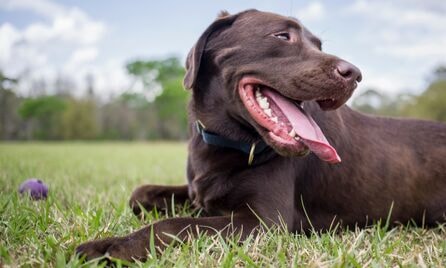
Leash free areas are not for every dog. Please know if your dog would be suitable before you take the plunge. Initially, go at a quiet time. Observe which dogs are there. Speak to their owners. It is they with whom you and your dog will be sharing the area. You want things to go right from the very first day, so, easy does it. I guess dogs fit into groups. Dogs that love these areas. Dogs that hate them, through a previous bad experience in most cases, and dogs that really just want to lie down under the shade of the nearest tree or sit by your side and simply watch everyone else.
Know your dog and you will know the answer.
Why pick Everyday Pet Insurance?
Related articles.
- text
-
# Policy Terms and Conditions, exclusions and limits apply. Benefit limit amounts vary by level of cover.
- text
-
= The gap is defined as the difference between the vet's invoice and the claim benefit under your policy. Policy terms and conditions apply. GapOnly® is only available at participating Vets. Please visit GapOnly® to search for GapOnly® enabled vets. GapOnly® is a trademark owned by PetSure (Australia) Pty Ltd (PetSure) (ABN 95 075 949 923, AFSL 420183).
- text
-
‡ Cover is available for the life of your pet provided you renew your policy each year without any break, lapse or change in the level of Cover. This means once your pet is insured with us and as long as we continue to offer the product, you will be able to renew your policy for that pet for life and your cover level will not be reduced as your pet ages provided you continuously maintain the cover. Cover is subject to the terms and conditions of your renewing policy. See details in your PDS.
- text
-
Dr Harry Cooper (AR No.1000933) is an Authorised Representative of PetSure (Australia) Pty Ltd (AFSL 420183). Any advice provided by Dr Harry Cooper in relation to Everyday Pet Insurance is general only and does not take into account your individual objectives, financial situation or needs.
- text
-
Everyday Pet Insurance policies entered into for the first time prior to 17 July 2023 and subsequent renewals of those policies are issued by The Hollard Insurance Company Pty Ltd ABN 78 090 584 473, AFSL 241436 (Hollard), arranged and administered by PetSure (Australia) Pty Ltd ABN 95 075 949 923, AFSL 420183 (PetSure) and promoted and distributed by Hollard’s Authorised Representative (AR) Woolworths Group Limited ABN 88 000 014 675, AR 245476 (Woolworths). Everyday Pet Insurance policies entered into for the first time on or after 17 July 2023 and subsequent renewals of those policies are issued by PetSure and promoted and distributed by PetSure’s AR, Woolworths. Any advice provided is general only and does not take into account your individual objectives, financial situation or needs. Please consider the Product Disclosure Statement (PDS) to ensure this product meets your needs before purchasing, or choosing to continue with the product. PDS and Target Market Determination available at insurance.everyday.com.au/pet-insurance.
